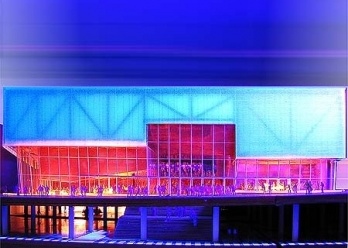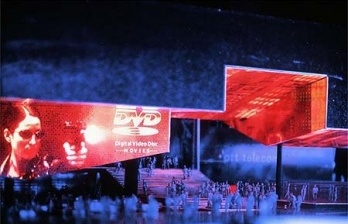
Block 6 Fachada Principal
Eduardo Aquino: Having the opportunity to come here a few times I have now a feeling of the working space, I sense the office—which in fact I have a difficulty to call it "an office"—which feels much more like a laboratory. You guys are always searching for something, always trying it out, always working through questions. So, if you agree with me that OMA is more like a laboratory trying to push the edges of the practice, then what are you searching for?
Floris Alkemade: The nature of the commissions and the conditions in which the architect has to operate do change rapidly. This means that if you try to answer a question by reworking existing models you will miss what is new. This often leads to an architecture that seems to avoid what is obvious, simply because it neglects the real nature of the commission.
In our working method, we are searching for the correct answer to the question. This means you first have to analyze the question to its full extend. We are always trying to find what is in that question, what is in the commission that could be new, what could be different and in that sense we are always investigating what would be the most direct, the most radical way of answering the question.
That's where the role of Rem Koolhaas is important because he always will indicate what to investigate, not giving the answers but always pointing you to issues that matter in the specific case. In that sense, it is always the research, working with a specific site, a specific commission, and a specific way of reading the demand that could lead to something new, more radical, and more brutal.
In such a process, it is also important to have an intelligent client who understands what we are investigating and why we are doing it. Although they will never admit it, many clients do prefer ugliness to radicalism. Therefore, a lot of time we do invest in preparing presentations to the client in order to make him understand.
EA: Rem's position is not of a traditional architect. The architect usually comes with a first trace, with a first sketch, or a first croquis. He is more of a critic in this case.
FA: Yes, exactly. He often makes split-second sketches though. Not outlining the contour of whatever you are doing but sketches to rephrase the question, rephrasing the issue, pointing to the direction you need to investigate. In the process, this proves to be much more essential and much more leading to other developments that you would expect. In that sense he uses the fact there is this enormous amount of people in the office that will sketch and try things in an unpredictable way. We do realize that a good idea can come from anybody. You need to be able to recognize a good idea and not to shift it away because it is poorly illustrated or whatever. It is about recognizing qualities. Rem sometimes will give directions nobody really understands but that will trigger a lot of investigations which potentially will lead to new ways of looking at it, and then in there might be a good idea.
Sometimes it also happens that ideas developed for one project, which are not appropriate to be used in that project, do fit perfectly in another project. So there is also cross-fertilization in between projects. There is always a trial and error process where Rem once in while walks in and picks out elements that are in his mind the most promising, or simply he will indicate if there is a need for more investigation because simply it is not there yet.
These processes are not linear. It's like moving in all directions and sometimes the first sketch, the first minute happens to be the right one but you will only find out after a long time of trial and error and then you go back to the first one. That actually happens quite often. There seems to be a kind of instinct that, before you know too much of a project, directs you in the right way. However, this usually only shows until you have tried a lot. That is why you will always find in the office millions of models and trials. Rem will be the one directing the flow of ideas and picking up the right ones.
Block 6 Entrada principal



